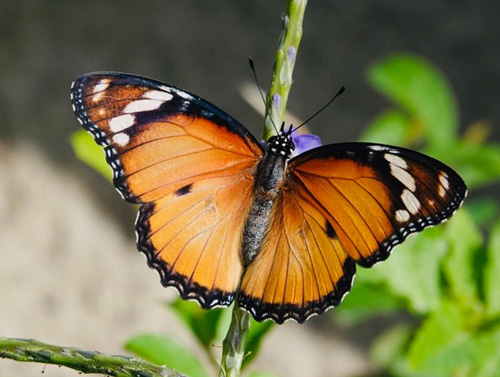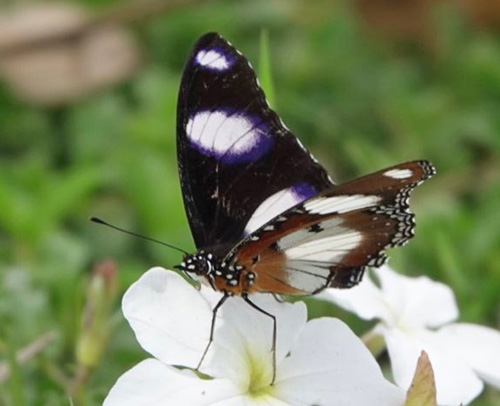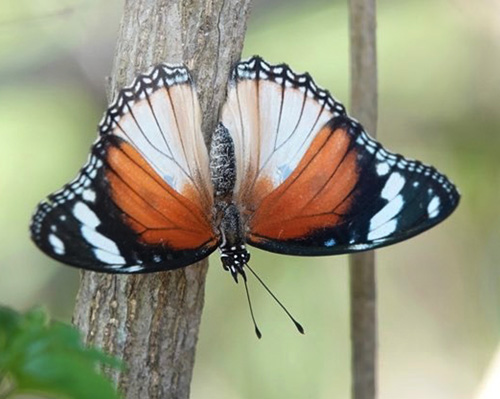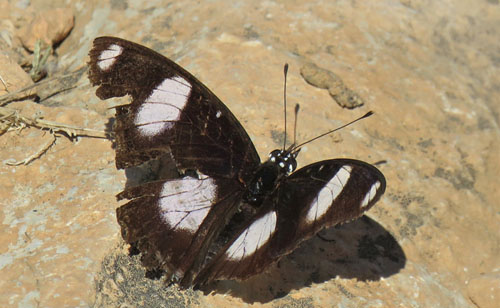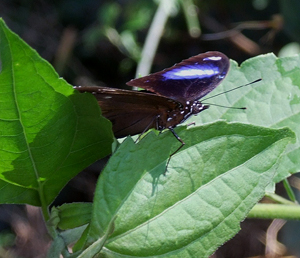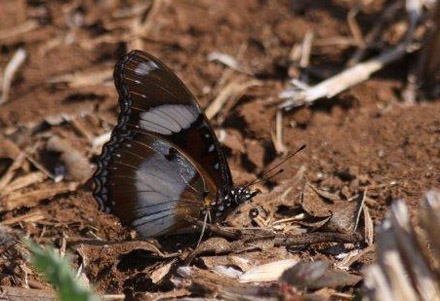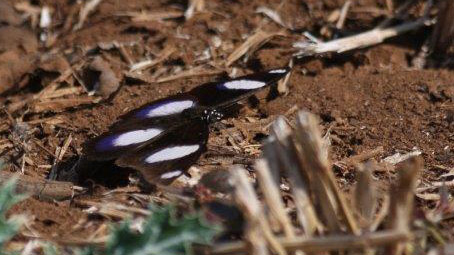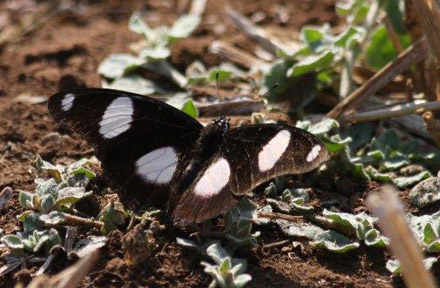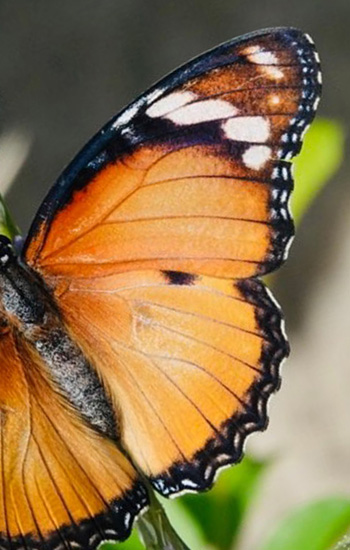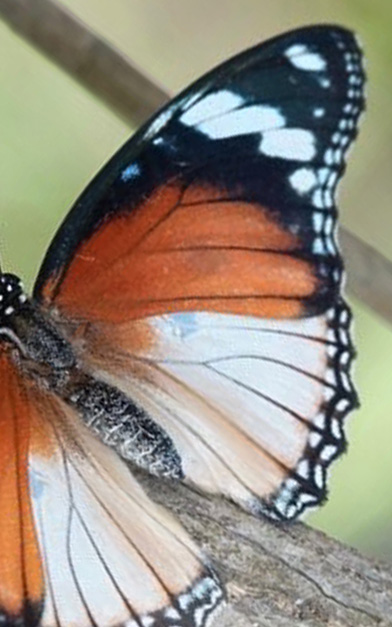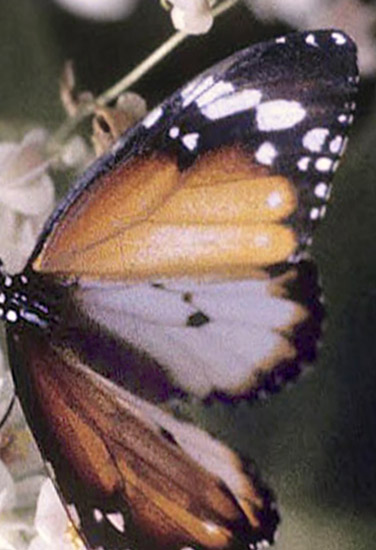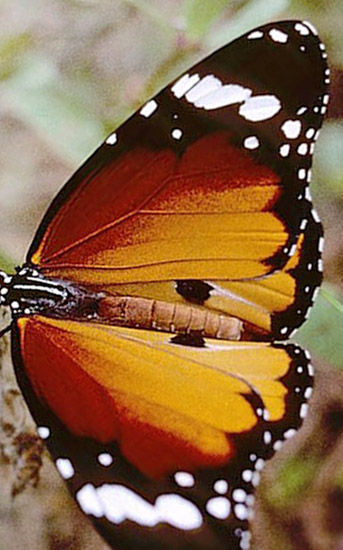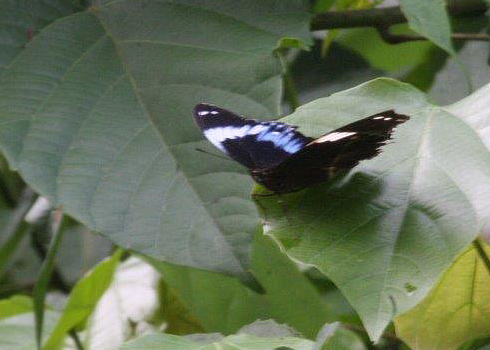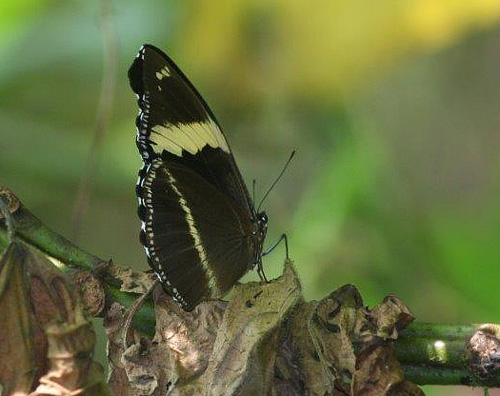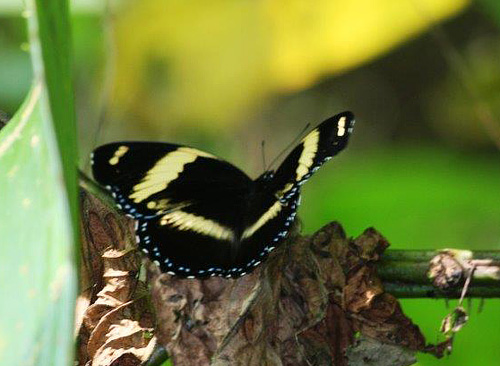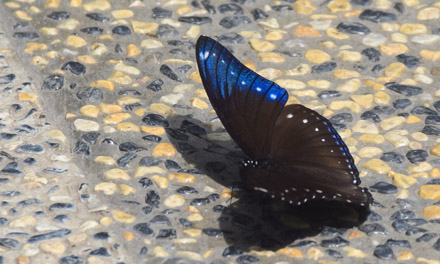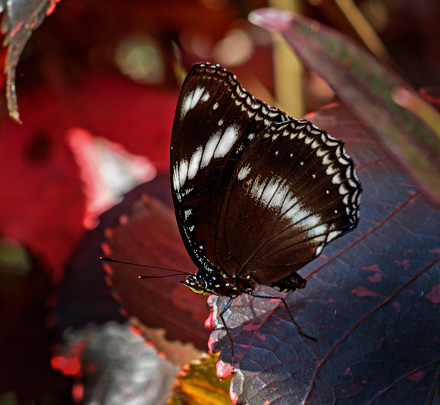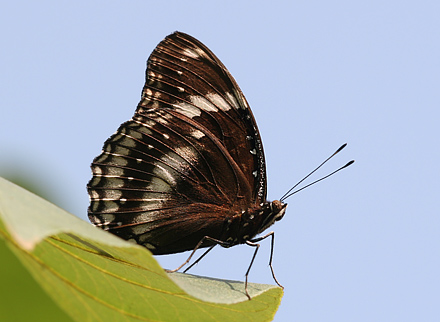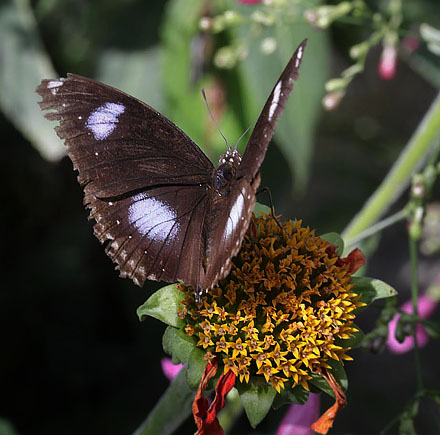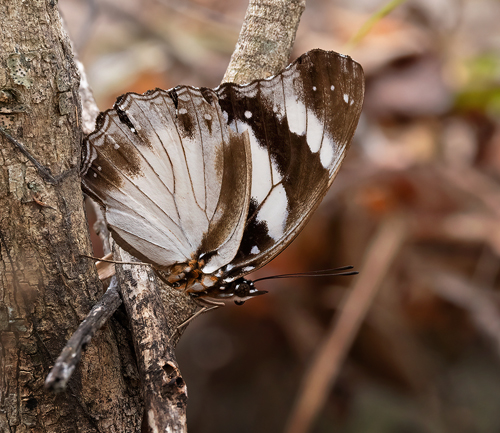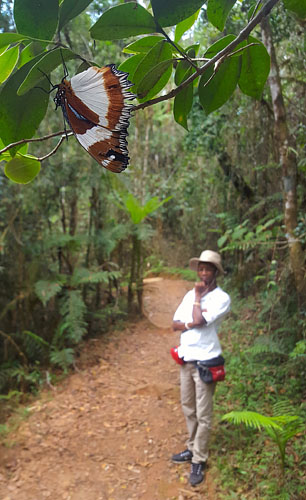Mimic
Hypolimnas misippus
first update d. 16 february 2022
last update d. 28 october 2024
| Mimic, Hypolimnas
misippus (Linnaeus,
1764) female. Paje, Unguja, Zanzibar, Tanzania medio february, 2022. Photographer: Regitze Enoksen |
Mimic, Hypolimnas
misippus (Linnaeus,
1764) male. Masai Mara Wildlife Reserves, SW Kenya medio february, 2022. Photographer: Regitze Enoksen |
| Mimic, Hypolimnas
misippus (Linnaeus,
1764) female. Paje, Unguja, Zanzibar, Tanzania medio february, 2022. Photographer: Regitze Enoksen |
Mimic, Hypolimnas
misippus (Linnaeus,
1764) male. Paje, Unguja, Zanzibar, Tanzania medio february, 2022. Photographer: Regitze Enoksen |
| Mimik, Hypolimnas
misippus
han. Dhofarbjergene, Oman november 2018. Fotograf: Bo Kayser |
Danaid
Eggfly, Hypolimnas misippus male. Hainan, China d. 16 October 2007. Photographer: Henrik Stig Larsen |
Mimic ,
Hypolimnas misippus male. Chitwan Nat. park, Nepal november 1995. Photographer: Lars Andersen |
| Danaid
eggfly, mimic or diadem,
Hypolimnas
misippus
(Linnaeus, 1764). Description: Males are blackish with distinctive white spots that are fringed in blue. Females are in multiple forms that include male-like forms while others closely resemble the toxic butterflies plain tiger, Danaus chrysippus and monach, Danaus plexippus. Foodplant: Common purslane, Portulaca oleracea. Asystasia Blume, Asystasia lawiana. Distribution: They are found across Africa, Libya, Turkey, Madagascar, Mauritius, Arabia, India, Indochina, Hainan, Taiwan, Okinawa, Orienten, Australia, New Guinea, Salomon Isl, New Caledonia. In the Americas, they are found in the West Indies, with migration to Central and North America. In
Madeira, the last migration of this art was
recorded by Wind Birds on 13 November 2012 with at least 3 males and they
were in a very dry coastal area. They were put
for a few weeks in the same area. Danish name: Mimik. GBIF: Global Biodiversity
Information Facility. |
| Danaid Eggfly, Hypolimnas misippus (Linnaeus, 1764). |
| Tansa Forest north of Mumbai, India January 2016. Photographer; Erling Krabbe |
__________________________________
| Mimic, Hypolimnas misippus male. Zanzibar |
Mimic, Hypolimnas misippus female. Zanzibar |
Mimic, Hypolimnas misippus female. Zanzibar |
Plain
Tiger, Danaus chrysippus female. Malaysia |
Plain
Tiger, Danaus chrysippus male. Spain |
______________________________________
Blue Diadem
Hypolimnas salmacis
first update d. 16 february 2022
last update d. 19 february 2022
Blue
Diadem, Hypolimnas
salmacis ssp. thomensis (Aurivillius, 1910) male.
Monte Carme, São Tomé january 30, 2018. Photographer; Erling Krabbe
| Blue
Diadem, Hypolimnas
salmacis (Drury,
1773). Description:
Males are blackish with distinctive white spots
that are fringed in blueDescription: There are
two female forms, one with blue and the other
with an ochreous ground-colour. Foodplant: The larvae
feed on Urera hypselodendron, U. trinervis and Fleurya species. Danish name: Blå Diadem. GBIF: Global Biodiversity
Information Facility. |
Blue
Diadem, Hypolimnas
salmacis ssp. thomensis (Aurivillius, 1910) female.
Lagoa Amelia, São Tomé february 2, 2018. Photographer; Erling Krabbe
______________________________________
Malayan Eggfly
Hypolimnas anomala
first update d. 16 february 2022
last update d. 16 february 2022
Malayan
Eggfly, Hypolimnas
anomala (Wallace,
1869) male.
Poring Hotsprings, Sabah, Borneo october 9, 2016. Photographer; Hanne Christensen
| Malayan
Eggfly or Crow Eggfly, Hypolimnas anomala (Wallace, 1869). Description: can reach a wingspan of 65–75 mm. These butterflies have brown forewings with a purple sheen. They show variable white markings. Usually there are a double row of white marginal spots and three pale streaks on each forewings. The hindwings are rather paler, with dark brown veins. The undersides of both wings are similar to the uppersides. In the adult butterflies only four legs are present. These butterflies mimic Euploea species. Habitats: It especially occurs in lowlands and tropical rainforests, wastelands, hill parks and natural reserves. Egg, Caterpilar and puppae: Females lay golden in colour globular eggs in a large cluster on the underside of the leaves. They hatch after about 3–4 days. The 6th (and final) instarcaterpillars are black with yellow spots and spines. Also the head is yellow. with long black cephalic horns. They are gregarious and usually occur in large numbers. Foodplants: They feed on leaves of Urticaceae (Pipturus argenteus, Pipturus arboresceus, Pouzolzia, Villebrunea species and Euphorbiaceae (Claoxylon). Distribution: This species is present as various subspecies in South East Asia, Moluccas, New Guinea, Australia. GBIF: Global Biodiversity
Information Facility. |
______________________________________
Great Eggfly
Hypolimnas bolina
first update d. 16 february 2022
last update d. 19 february 2022
Great
Eggfly, Hypolimmas
bolina (Linnaeus,
1758) male.
Sepilok Raainforest,
Sabah, Borneo september, 2017. Photographer; Hanne Christensen
| Great
Eggfly, Hypolimmas
bolina (Linnaeus, 1758) female. Ao Nang, Thailand February 11, 2016. Photographer; Henrik S. Larsen |
Great
Eggfly, Hypolimmas
bolina (Linnaeus, 1758) female. Mont Kinabalu, Borneo d. 20 marts 2017. Fotograf; John S. Petersen |
| Great
Eggfly, Hypolimnas
bolina
(Linnaeus, 1758). Description: is a black-bodied butterfly with a wingspan of about 70–85 mm. The species has a high degree of sexual dimorphism. The female is mimetic with multiple morphs. Males are monomorphic. The dorsal wing surface is jet black but features three prominent spots, two on the forewing and one on the hindwing. To a human observer these appear as white spots fringed with blue-violet. Females are owing to the presence of both genetic polymorphism and phenotypic plasticity. Polymorphism is expressed primarily on the dorsal surface, with morphs varying in the presence of white, orange and blue markings. One genetic morph, named euploeoides by Clarke & Sheppard (1975), is thought to present a mimic of one or several members of the genus Euploea. Mimicry;
To the west the female is monomorphic, mimicking
species of the oriental and Australasian danaid
genus Euploea. Habitats: is a generally
common butterfly across most tropical and
sub-tropical habitat types, including wet/dry
woodland (such as tropical savanna), rainforest
and shrubland. It is a common visitor to suburban
back yards and other areas of human disturbance.
In the Australian tropics, H. bolina is particularly common along
tracks, streambeds, and the corridors formed
between remnant gallery forest and cultivated
sugar cane fields. Foodplant: Race bolina
breeds on Sida rhombifolia, Elatostemma cuneatum, Portulaca oleracea, Laportea interrupta, Triumfetta pentandra and Asystasia species. GBIF: Global Biodiversity
Information Facility. |
| Great
Eggfly, Hypolimmas
bolina (Linnaeus, 1758) female. Koh Samui, Thailand d. 20 january 2011. Photographer: Erni Boesen |
Great
Eggfly, Hypolimmas
bolina (Linnaeus, 1758) female. Chiang Mai, Thailand February 9, 2016. Photographer; Henrik S. Larsen |
______________________________________
| Deceptive
Diadem, Hypolimnas deceptor (Doubleday, 1845). Accueil du parc Zombitse-Vohibasia, Madagascar 19 october. 2023. Fotograf; Knud Ellegaard |
Madagascar
Diadem, Hypolimnas dexithea (Hewitson, 1863). Ranomafana National Park, Madagaskar d. 8 November 2018. Fotograf; Hanne Christensen |
______________________________________
Tilbage til Sommerfugle i Troperne
Home tilbage til forsiden
